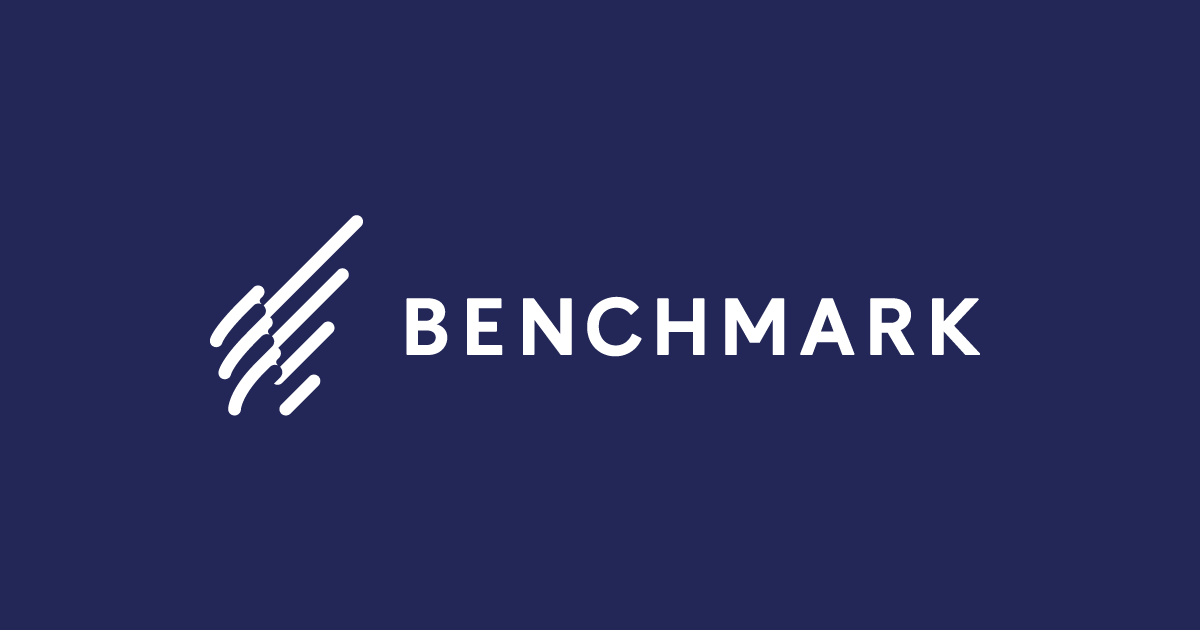In today’s fast-paced digital world, email marketing remains a cornerstone for businesses looking to engage their audience effectively. But with a plethora of tools available, choosing the right one can be a daunting task. In this in-depth analysis, we’re going to dissect two leading contenders in the email marketing arena: Benchmark Email and SalesHandy. Our aim is not just to compare features, but to delve into how these tools can practically shape your marketing strategy in 2024.
| Benchmark Email | SalesHandy |
|---|---|
 |  |
| G2 Score – 4.3 out of 5 stars | G2 Score – 4.6 out of 5 stars |
| TrustRadius Score – 6.5 out of 10 | TrustRadius Score – 4.6 out of 5 stars |
Understanding Your Audience’s Inbox: Personalization and Engagement
One critical aspect where email marketing tools often compete is in personalization and engagement. Let’s dive into how Benchmark Email and SalesHandy fare in this area.
Benchmark Email: Making Every Subscriber Feel Special
Benchmark Email has always been lauded for its user-friendly interface, but it’s their personalization capabilities that truly stand out. In 2024, personalization isn’t just about adding a first name in an email. Benchmark goes deeper. It allows for segmentation that is not just based on demographics but also on subscriber behavior. Imagine sending an email tailored not just to ‘John’ but to ‘John who loves gardening tools’. That’s the level of personalization we’re talking about.
Additionally, Benchmark’s email templates are not just visually appealing; they’re smart. They adapt to subscriber preferences over time, ensuring that the content feels bespoke for each recipient. This isn’t just about colors and layouts; it’s about content that resonates. Whether your audience prefers detailed guides or quick tips, Benchmark’s emails evolve to match these preferences, keeping engagement levels high.
SalesHandy: The Power of Data-Driven Engagement
On the other side, we have SalesHandy, a tool that has made a name for itself through its data-driven approach. SalesHandy’s strength lies in its ability to track and analyze how recipients interact with your emails. This isn’t just about open rates or click-through rates; SalesHandy provides insights into how long someone spends reading your email or which parts they engage with most.
This level of detail allows you to fine-tune not just what you send, but how and when you send it. SalesHandy’s data can tell you the best time to send an email to ensure maximum engagement or the type of content that works best for different segments of your audience. It’s like having a crystal ball that tells you exactly what your audience wants, and when they want it.
Tailoring Your Approach: Who Wins?
The decision between Benchmark Email and SalesHandy in the realm of personalization and engagement boils down to your approach. If you’re looking for an intuitive, behavior-based segmentation and creative customization, Benchmark Email might be your go-to. However, if your strategy is driven by data and analytics, providing granular insights into your audience’s interactions, SalesHandy stands out as the more fitting choice.
Both tools offer compelling features, but it’s about aligning their strengths with your specific email marketing goals. Are you looking to create a deeply personalized experience for your subscribers, or are you aiming to leverage data to optimize every aspect of your email campaigns?
Automation and Workflow Efficiency: The Backbone of Your Email Campaigns
In 2024, the efficiency of your email marketing campaigns heavily depends on the automation and workflow capabilities of the tool you choose. Let’s explore how Benchmark Email and SalesHandy stack up in this arena.
Benchmark Email: Simplifying Complex Campaigns
Benchmark Email has always been synonymous with user-friendliness, and this extends to its automation features. The platform offers a range of automated workflows that can be customized to fit various campaign needs. Whether it’s a welcome series, a follow-up sequence, or a re-engagement campaign, Benchmark makes it easy to set these up with a few clicks.
But it’s not just about setting up emails. Benchmark Email excels in creating a seamless flow of communication. You can easily design workflows that respond to subscriber actions, such as opening an email or clicking a link, ensuring that your follow-up is timely and relevant. This level of automation doesn’t just save time; it makes your campaigns feel more personal and responsive.
SalesHandy: Maximizing Efficiency with Advanced Automation
SalesHandy takes automation a step further. It’s not just about automating email sequences; it’s about optimizing them for maximum efficiency. With SalesHandy, you can automate your email outreach and follow-ups based on recipient behavior and even automate responses based on specific actions taken by your audience.
What sets SalesHandy apart is its ability to integrate advanced analytics into its automation workflows. This means you’re not just sending out emails based on a preset schedule; you’re sending them out based on what the data says is the best time to engage each segment of your audience. This level of detail ensures that your campaigns are not just automated but are also optimized for the highest possible engagement.
Choosing the Right Tool for Your Campaigns
When it comes to automation and workflow efficiency, both Benchmark Email and SalesHandy offer robust solutions, but their approaches differ. If you prefer a tool that offers straightforward, easy-to-set-up automated campaigns with a personal touch, Benchmark Email is your ally. On the other hand, if you’re looking for a tool that integrates deep analytics into its automation, offering not just efficiency but also optimization, SalesHandy might be the better choice.
Your decision here will depend on the complexity of your campaigns and how much you value data integration in your automation processes. Do you want a tool that makes it simple to create effective, personalized automated campaigns, or are you looking for one that uses data to constantly optimize your email outreach?
Integration and Scalability: Expanding Your Marketing Ecosystem
In 2024, no tool is an island. The ability of your email marketing tool to integrate with other software and scale as your business grows is paramount. Let’s see how Benchmark Email and SalesHandy fare in this domain.
Benchmark Email: Seamless Integration and Growth
Benchmark Email has long been appreciated for its wide range of integrations. Whether you’re using a CRM like Salesforce, an e-commerce platform like Shopify, or a social media management tool, Benchmark Email likely has an integration for it. This seamless connectivity means that your email marketing campaigns can effortlessly become a part of a larger, cohesive digital marketing strategy.
But integration isn’t the only highlight; scalability is another. As your business grows, your email marketing needs will evolve. Benchmark Email understands this and offers scalability in its plans and features. You can start with the basics and gradually unlock more advanced features as your subscriber list and marketing needs grow. This scalability ensures that Benchmark Email continues to be a fit for your business, regardless of its size.
SalesHandy: Advanced Integration and Data-Driven Scalability
SalesHandy takes a slightly different approach to integration and scalability. While it also offers a range of integrations, its focus is more on how these integrations can enhance the data-driven aspect of your campaigns. Integrating with tools like LinkedIn or your CRM isn’t just about syncing data; it’s about enriching your email campaigns with deeper insights and analytics.
In terms of scalability, SalesHandy is designed to grow with your business. Its advanced features, like detailed analytics and automated sequences, are as suitable for a small startup as they are for a large enterprise. The tool scales not just in terms of the number of emails you can send or contacts you can store, but also in the sophistication of the features available to you as your business grows and your marketing strategies become more complex.
Integrating and Scaling Your Email Marketing Efforts
When it comes to integration and scalability, both Benchmark Email and SalesHandy shine, but in different ways. If you’re looking for a tool that integrates easily with a wide range of other platforms and scales in a straightforward, user-friendly manner, Benchmark Email is a great choice. However, if your focus is on a tool that integrates in a way that enhances your data-driven marketing efforts and offers scalability that includes advanced features for larger or more complex operations, SalesHandy might be the better fit.
Your choice here depends on what kind of ecosystem you’re building around your email marketing efforts and how you envision it growing. Do you need a tool that fits seamlessly into a diverse set of tools and grows in a user-friendly way, or are you looking for a tool that scales in sophistication and enhances your data-driven strategies?
Delving into the Pricing Dynamics
Benchmark Email and SalesHandy are reputable platforms in the email marketing and sales engagement landscape, each bringing unique features to the table. However, understanding their pricing strategies is crucial for businesses aiming to maximize their investment. This article offers an in-depth comparison of the pricing models of Benchmark Email and SalesHandy, aiming to illuminate the strengths and considerations of each, thereby guiding you towards a choice that aligns with your financial constraints and marketing or sales goals.
| Benchmark Email | Free Plan: Offers basic email marketing features with a subscriber limit and Benchmark branding. Pro Plan: Pricing starts at $13/month for 500 subscribers and includes advanced features like automation, A/B testing, and targeted emailing. The price increases based on the number of subscribers. |
| SalesHandy | Free Plan: Basic features including email tracking and scheduling. Regular Plan: Priced at $9 per user per month, offering unlimited email tracking and templates, and mail merge features. Plus Plan: At $22 per user per month, includes advanced features like team reports, team templates, and document tracking. Enterprise Plan: At $49 per user per month, adding features like dedicated account manager and custom integration. |
Benchmark Email Pricing Insights
Benchmark Email is celebrated for its user-friendly interface and a comprehensive suite of features that cater to businesses of various scales. Its pricing model is mainly subscriber-based, providing a clear and scalable structure.
Benchmark Email offers a Free plan, suitable for startups or small businesses starting their email marketing journey, offering basic functionalities with a limit on the number of sends. For more comprehensive features and a larger sending capacity, the Basic plan scales up in price as the number of subscribers increases.
Businesses looking for more sophisticated marketing tools can opt for Benchmark Email’s Pro plan. This package is aimed at marketers who require advanced functionalities like automation, detailed analytics, and A/B testing, with the cost scaling in line with the subscriber base size.
Exploring SalesHandy Pricing
SalesHandy sets itself apart by focusing on sales engagement and productivity tools, primarily catering to sales teams looking to streamline their processes and improve their performance. Its pricing structure is feature-based, offering various plans depending on the sophistication of the tools required.
SalesHandy’s Regular plan is designed for individuals or teams just starting with sales engagement, offering basic features like email tracking and scheduling. The Plus plan, on the other hand, offers additional features such as mail merge, and automated follow-ups, designed for more established teams aiming to optimize their sales processes.
For larger teams or organizations requiring a comprehensive suite of sales engagement tools, SalesHandy’s Enterprise plan offers advanced features, including team performance reports, dedicated account management, and custom integrations. The pricing for this plan is tailored to the specific needs and scale of the organization.
Benchmark Email vs SalesHandy: Pricing Model Analysis
While Benchmark Email and SalesHandy both offer valuable tools in their respective domains, their pricing models cater to different aspects of email communication and sales engagement.
Benchmark Email’s pricing model is ideal for businesses that prioritize a scalable solution for their email marketing campaigns. It offers a clear pathway from basic to advanced email marketing tools, aligning costs with the growth of the subscriber base.
SalesHandy, conversely, provides a feature-based pricing model, catering to sales teams that require a flexible and scalable solution to improve their engagement and productivity. Its tiered pricing offers a range of tools and functionalities designed to optimize various stages of the sales process.
Choosing between Benchmark Email and SalesHandy involves a thorough understanding of your primary focus, whether it’s scaling your email marketing efforts or enhancing your sales engagement processes. Benchmark Email is a solid choice for businesses seeking a straightforward, subscriber-based solution that grows with their audience. SalesHandy, on the other hand, is more suited for sales teams in need of a robust set of tools designed to optimize their engagement and productivity, with a pricing model that scales with the complexity of the features required. Consider your specific needs, budget, and the main objectives of your email marketing or sales engagement strategy to determine which platform offers the best alignment with your business goals.

Related: Check out our free SEO suite

Cost-Effectiveness and Value for Money: Maximizing Your Investment
In 2024, every penny spent on marketing tools needs to justify its value. Benchmark Email and SalesHandy, while offering robust features, also need to be assessed in terms of their cost-effectiveness and the value they bring to your business.
Benchmark Email: Affordable and Value-Packed
Benchmark Email has been known for its affordability, especially for small to medium-sized businesses. The pricing structure is straightforward, with plans that scale based on the number of subscribers. What makes Benchmark Email stand out in terms of value is not just its affordability but the range of features you get at each price point.
Even at the lower-tier plans, Benchmark Email offers a comprehensive set of tools including automation, analytics, and a wide range of integrations. This means that even businesses on a tight budget can access a full suite of email marketing tools without breaking the bank. Furthermore, Benchmark’s focus on user-friendliness means you don’t need to invest heavily in training or additional resources to make the most out of the platform.
SalesHandy: Premium Features with a Cost
SalesHandy positions itself slightly differently when it comes to pricing. It’s generally seen as a more premium option, with pricing that reflects its advanced features, especially in analytics and automation. While this might put it at a higher price point compared to Benchmark Email, it’s important to consider the value these advanced features bring.
For businesses that rely heavily on data-driven strategies and require advanced automation capabilities, SalesHandy offers a significant return on investment. The depth of analytics and the ability to optimize campaigns based on detailed insights can lead to higher engagement rates and, ultimately, a better ROI. However, this does mean that SalesHandy might be a more considerable investment, especially for smaller businesses or those just starting with email marketing.
Balancing Cost and Value
In choosing between Benchmark Email and SalesHandy based on cost-effectiveness, it’s essential to weigh the immediate cost against the potential long-term value. If your business is looking for an affordable, all-rounded tool that offers a good balance of features at a reasonable price, Benchmark Email is an excellent choice. However, if you’re ready to invest more for advanced features, particularly in analytics and automation, and expect a higher return on that investment, SalesHandy could be the more suitable option.
The decision here hinges on your business’s current size, budget constraints, and long-term marketing goals. Are you looking for an affordable and comprehensive solution, or are you willing to invest more for advanced capabilities and potential higher returns?
Customer Support and Community Resources: Ensuring Smooth Operations
The quality of customer support and the richness of community resources can greatly influence your experience with an email marketing tool. Let’s compare how Benchmark Email and SalesHandy fare in this regard.
Benchmark Email: Accessible Support and Extensive Resources
Benchmark Email is renowned for its accessible and responsive customer support. With options like live chat, email support, and a comprehensive knowledge base, users can expect quick and helpful responses to their queries. This is particularly beneficial for businesses that may not have a dedicated IT or digital marketing team and rely on prompt support.
Beyond direct support, Benchmark Email also boasts a rich library of resources. These include detailed guides, best practice articles, and webinars that not only help users get the most out of the platform but also educate them on broader email marketing strategies. This emphasis on education and support makes Benchmark Email a great option for businesses looking to expand their email marketing knowledge base while enjoying reliable support.
SalesHandy: Expert Support with a Focus on Data
SalesHandy takes a slightly different approach. While it also offers robust customer support, its strength lies in providing expertise, particularly in areas related to data analytics and advanced email marketing techniques. The support team at SalesHandy is not just about troubleshooting; they provide insights that can help businesses refine their email marketing strategies.
In terms of community resources, SalesHandy provides a wealth of information, particularly for businesses that are data-driven and look to leverage advanced analytics in their campaigns. The resources available are more specialized, catering to a user base that seeks to dive deep into the nuances of email marketing analytics and optimization.
Choosing the Right Support Ecosystem
When it comes to customer support and community resources, the choice between Benchmark Email and SalesHandy depends on your specific needs. If you value highly accessible, responsive support and a wide range of general educational resources, Benchmark Email is a strong contender. However, if you require more specialized support, particularly in data analytics and advanced campaign strategies, and appreciate resources that delve deeper into these areas, SalesHandy may be the better choice.
Each tool offers a distinct kind of support and learning ecosystem. Your decision should be based on the level of expertise you already have in your team, the complexity of your email marketing campaigns, and the type of support that will benefit you most.
User Experience and Interface Design: Navigating with Ease
The design and user experience of an email marketing tool can greatly impact its effectiveness and the efficiency of your team. Let’s examine how Benchmark Email and SalesHandy fare in this crucial aspect.
Benchmark Email: Intuitive Design for All Users
Benchmark Email is known for its user-friendly interface. The platform is designed with simplicity in mind, making it accessible even to those who are new to email marketing. Navigation is straightforward, with a clear, uncluttered layout that makes finding features and tools easy. This intuitive design means less time spent on figuring out the platform and more on creating and managing effective email campaigns.
Additionally, Benchmark Email’s visual editor is a highlight, offering a drag-and-drop interface that simplifies email creation. This level of intuitiveness extends to its reporting and analytics features, which present data in an easy-to-understand format, making it simple to track campaign performance and make informed decisions.
SalesHandy: Sophisticated Interface for Data-Driven Marketers
SalesHandy, on the other hand, offers a more sophisticated interface that caters to users who are familiar with email marketing tools and require advanced functionalities. The design is sleek and modern, with a focus on efficiency and data presentation. For marketers who are data-savvy, SalesHandy provides an environment where complex data sets and analytics are accessible and actionable.
While SalesHandy’s interface might have a steeper learning curve compared to Benchmark Email, it compensates with powerful features like detailed campaign analytics, heat maps, and advanced scheduling options. This makes it an ideal choice for teams that prioritize data-driven decision-making and need a comprehensive tool to manage intricate email marketing campaigns.
Choosing the Right User Experience
The choice between Benchmark Email and SalesHandy in terms of user experience and interface design depends on the skill level and needs of your team. If your team values simplicity and an easy-to-use interface that allows quick campaign setup and management, Benchmark Email is the way to go. However, if your team is more experienced and requires detailed analytics and advanced campaign management features, SalesHandy’s sophisticated interface will be more beneficial.
Both platforms offer distinct experiences: one prioritizes ease of use and simplicity, while the other offers advanced features and a data-focused environment. The best choice depends on your team’s experience level, the complexity of your email marketing campaigns, and how deeply you wish to dive into analytics and data utilization.
Conclusion
In conclusion, Benchmark Email and SalesHandy offer distinct features and experiences tailored to different business needs and marketing strategies. Benchmark Email stands out for its user-friendliness, affordability, and robust customer support, making it ideal for small to medium-sized businesses or those new to email marketing. Its intuitive design and comprehensive resources are geared towards ease of use and broad applicability.
On the other hand, SalesHandy caters to a more advanced user base with its data-driven approach, sophisticated analytics, and automation capabilities. It’s suited for businesses that prioritize detailed data insights and require a more complex, feature-rich email marketing tool. Although it comes at a premium, its advanced features offer a significant return on investment for data-centric marketing strategies.
Ultimately, the choice between Benchmark Email and SalesHandy depends on your specific business needs, team expertise, and long-term marketing goals. Both platforms have their strengths, and the best choice will align with your priorities, whether it’s user-friendliness and cost-effectiveness or advanced features and data-driven functionalities.
Read Next:
- GetResponse vs ActiveCampaign: The Best Email Marketing Tool for 2024
- GetResponse vs AWeber:The Best Email Marketing Tool for 2024
- The Importance of Deliverability in Email Marketing: Ensuring Your Messages Reach the Inbox
- Email Marketing for Events and Webinars: Boosting Attendance and Engagement
- The Role of Mobile Optimization in Email Marketing Success






















Comments are closed.